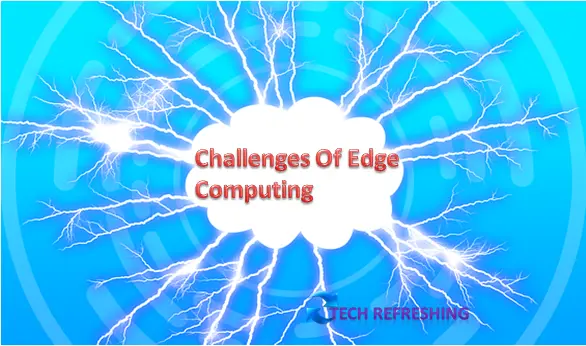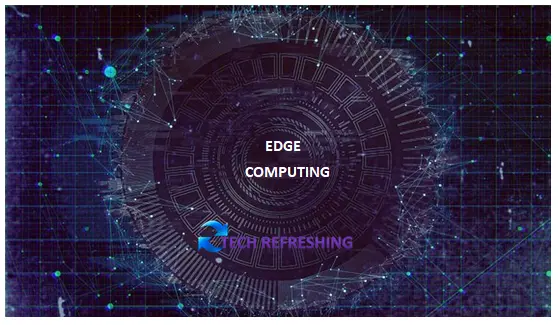Edge computing is a distributed computing paradigm that moves data processing and storage closer to the sources and consumers of data. Edge computing minimises the need for data transmission to centralised data centres, allowing low latency and real-time decision making, and can help bring down costs related to data processing and storage by relocating data processing and analysis to the edge of the network. Edge computing implementation, but, can also bring along fresh difficulties, like the requirement for specialised hardware and software and the administration of distributed resources.
Benefits of Edge Computing

Low Latency
One of the main benefits of edge computing is that it minimize the latency of communication between devices and the cloud. This is because data is processed and stored closer to the source, rather than having to be sent to a distant data center for processing. This is crucial for real-time applications like augmented reality, industrial automation, and self-driving cars because even a slight processing lag might have negative effects.
Improved Security
Another benefit of edge computing is that it can improve security by decentralizing the data storage and processing. By keeping sensitive data closer to the source, it is less vulnerable to cyber-attacks that target centralized data centers. Edge devices can be physically secured, making it more difficult for attackers to access the data.
Cost Savings
Edge computing can also help to reduce costs by reducing the amount of data that needs to be transmitted over the network to a central location for processing. This can be especially beneficial for organizations that are dealing with large amounts of data from IoT devices, as it can help to reduce the amount of bandwidth required, and ultimately the costs associated with transmitting that data.
Increased Reliability
Edge computing can also increase the reliability of systems by distributing the processing and storage across multiple devices. This can help to ensure that the system continues to function even if one device fails. Additionally, edge devices can be designed to operate in harsh environments, which can further increase the reliability of the system.
Better Scalability
Edge computing can also make systems more scalable by adding or removing resources as needed. This is particularly important as the number of connected devices continues to grow at a rapid pace. By distributing resources closer to the edge of the network, it is easier to add new devices and services without having to reconfigure the entire system.
Better Privacy
Edge computing can also help to improve privacy by keeping sensitive data closer to the source. This can help to ensure that personal information is not transmitted over the network to a central location where it can be vulnerable to cyber-attacks. Additionally, edge devices can be designed to encrypt data, which can further improve privacy.
Challenges of Edge Computing

Edge computing is a distributed computing paradigm that brings computation and data storage closer to the devices that generate and consume data. This allows for faster and more efficient processing of data, as well as reduced latency and improved security. However, there are several challenges that must be overcome in order to fully realize the benefits of edge computing.
Security
One of the main challenges of edge computing is security. Edge devices are often deployed in remote and unprotected locations, making them vulnerable to physical tampering and cyber attacks. Additionally, edge devices typically have limited resources, making it difficult to implement traditional security measures such as firewalls and intrusion detection systems.
It is important to implement robust security protocols and encryption methods that can protect data as it is transmitted between edge devices and the cloud. It is important to ensure that edge devices are regularly updated and patched to address any known vulnerabilities.
Scalability
Another challenge of edge computing is scalability. As the number of edge devices and the amount of data generated by these devices increases, it becomes increasingly difficult to manage and process this data in a scalable manner.
To solve this problem, it is important to implement a distributed and decentralized architecture that can handle the increasing volume of data. Additionally, it is important to use machine learning and other advanced techniques to process and analyze data at the edge, rather than relying on centralized data centers.
Reliability
A third challenge of edge computing is reliability. Edge devices are often deployed in harsh environments, and can be subject to power outages and other disruptions. Additionally, edge devices may be mobile, making it difficult to ensure that they are always connected to the network.
To solve this problem, it is important to use the most important thing to use robust and reliable hardware and software that can withstand harsh conditions and disruptions. Additionally, it is important to implement redundancy and failover mechanisms that can ensure that data is still being processed and collected even if one or more edge devices fail.
Cost
A fourth challenge of edge computing is cost. Edge devices and the infrastructure required to support them can be expensive. The ongoing maintenance and management of edge devices can also be costly.
To solve this problem, it is important to use cost-effective hardware and software solutions. Additionally, it is important to implement automated management and monitoring tools that can help reduce the ongoing costs of maintaining and managing edge devices.
Conclusion
Edge computing presents a distributed paradigm for low latency and cost-effective data processing. The benefits of edge computing include reduced network traffic, improved data security, and increased responsiveness. However, challenges such as managing distributed systems and dealing with unreliable networks must also be considered. As the use of edge computing continues to grow, it is important for organizations to carefully evaluate the potential benefits and challenges in order to determine if it is the right solution for their specific needs.


